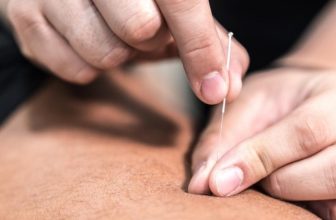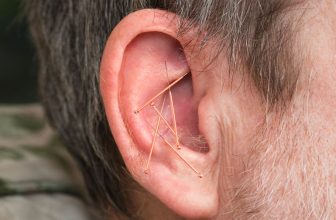
Chinese doctors have a variety of acupuncture points to treat frozen shoulder. Zhang Maohai, a Chinese acupuncturist, has claimed to have found an effective method of treating the disorder. He used yanglingquan (GB-34), a specific point on the leg, to treat the condition. He needled patients on the same side of the body as the shoulder that was affected, as well as on the leg of the person who was not affected.
Trigger points
In a recent study, a group of 68 patients with the frozen shoulder was given acupuncture to treat their trigger points. They were given five treatments a week for 20 weeks. Although they had no significant differences in pain, patients in the trigger point acupuncture group reported experiencing better shoulder pain than in the sham group. Acupuncture treatment also relieved pain and increased the range of motion in the shoulder.
The acupuncture point that is most often used for a trigger point is the middle shoulder, also known as Jian Jing. This point is also commonly used to treat other types of pain in the neck and shoulder area, including headaches and stiffness. Acupuncture can be a safe alternative to painkillers, cortisone shots, and surgeries, and is even considered a viable option for people with frozen shoulders.
Meridians
Acupuncture has been shown to help with both shoulder pain and the painful condition of frozen shoulder. While acupuncture is effective for both, the point selection for frozen shoulder involves a variety of meridians. In particular, the lung-large intestine meridians are involved, as are the meridians of cervical spondylosis and shoulder pain. These meridians are connected to the corresponding acupuncture points for frozen shoulder treatment.
The acupuncture points have a calming effect on the nervous system, which can contribute to several different symptoms, including pain and anxiety. There are ten main points associated with frozen shoulder pain, but LI15 and GB-21 are the easiest to find and are associated with lower ranges of motion. They are located on the girdle, in the depression between the anterior end of the acromion and the greater tubercle of the humerus.
acupuncture
Acupuncture can provide pain relief by stimulating specific acupoints. The treatment is effective in relieving stiffness and inflammation of the shoulder muscles and joints. It can also relieve pain by stimulating nerves in the shoulder tissues and releasing endorphins. While acupuncture is not a cure for frozen shoulder, it can help you recover from this condition. The best part is that it’s a safe and effective treatment that doesn’t involve any surgery.
Acupuncture for frozen shoulder treatment usually involves acupoints located on the small intestine meridian, which runs across the shoulder area. One key point for acupuncture treatment of frozen shoulder is bingfeng (SI-12), located at the attachment zone of the shoulder capsule. To locate bingfeng, raise your arm and feel a slight indentation. It’s recommended for the treatment of pain in the shoulder associated with difficulty raising the arm, as well as for the shoulder-arm syndrome.
Dry needling
Historically, dry needling has been used to relieve pain and increase the range of motion in the musculoskeletal system. It is thought to alleviate musculoskeletal pain by triggering the release of endorphins. In addition, it is also believed to reduce inflammation and scar tissue formation. These benefits are believed to be attributed to the release of serotonin, a neurotransmitter that promotes biological self-healing and reduces pain.
To test whether dry needling for frozen shoulder was an effective treatment, a randomized, sham-controlled trial was conducted on patients with chronic shoulder pain. A DN was performed once per session on the patient’s shoulder by a researcher blinded to group assignment. The patients’ pain intensity was assessed using a numeric rating scale. They were also subjected to a quantitative sensory testing protocol to evaluate sensory thresholds. In addition, patients with significant functional outcome measures were found to experience pain-free shoulder range of motion in all planes.
Thawing stage
The traditional use of acupuncture for frozen shoulder treatment involves stimulating the small intestine meridian, or SI-12, across the area of the shoulder. The key point is the bingfeng (SI-12) area at the attachment zone of the shoulder capsule, which can be located by raising the arm, causing an indentation. It is usually used in the treatment of shoulder pain associated with difficulty raising the arm, as well as a shoulder-arm syndrome.
Acupuncture for frozen shoulder is also an effective method for treating pain. The affected shoulder may be elevated and twisted while using a tea towel or other support. It is also helpful to massage the affected arm with an unaffected arm to help stretch and lift it. This technique will also improve blood flow and reduce inflammation. Once the shoulder aches and stiffness are reduced, the next step will be to apply heat or ice to the area.




